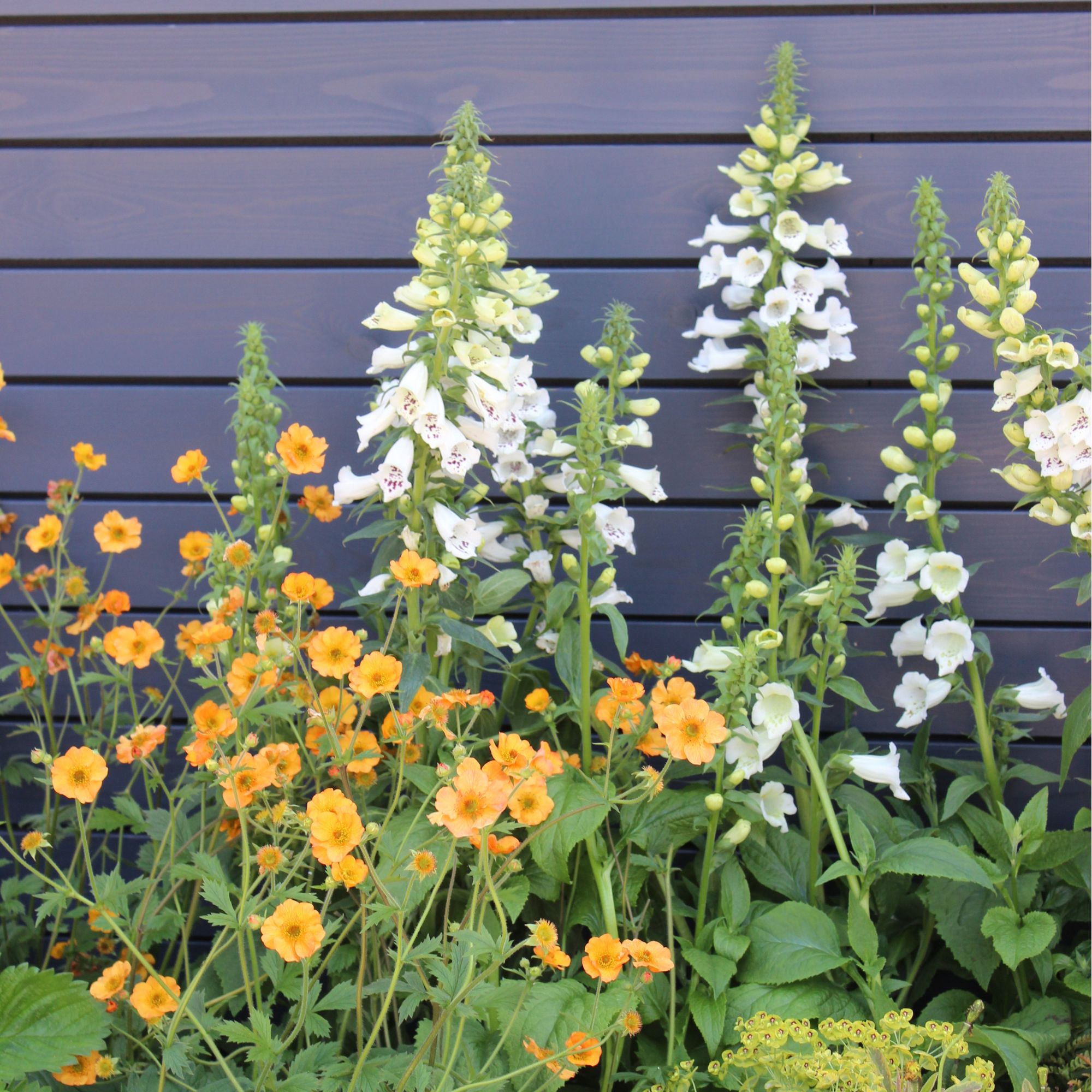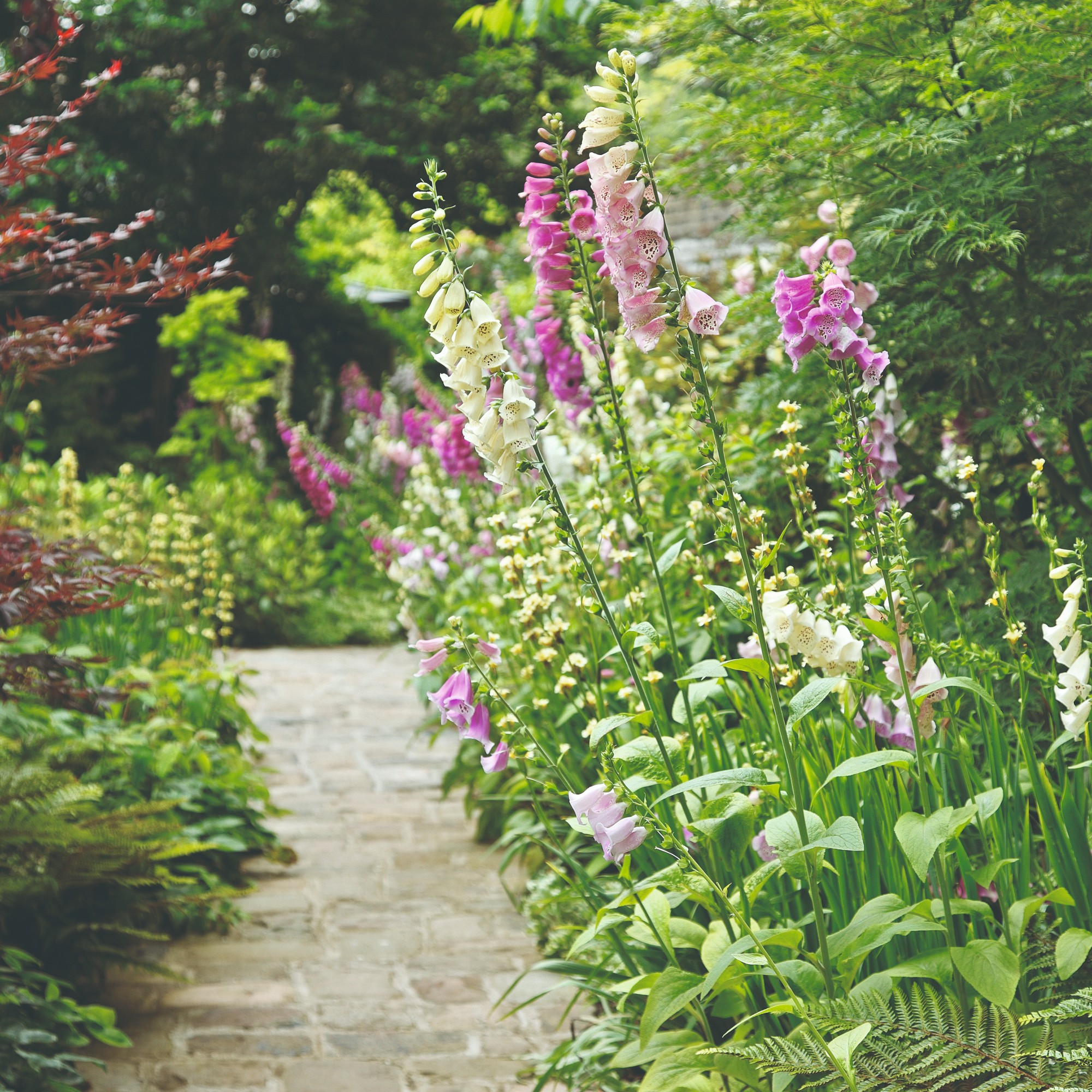
June is prime foxglove season, and we’ve never been happier to see these bell-shaped blooms brightening up gardens across the UK. But as you probably know, all good things come to an end, and there inevitably comes a time when foxgloves stop flowering. So, what do you do with foxgloves after flowering?
Nothing ruins a cottage garden idea more than brown, wilted flowers messing up the joint. And while we don’t blame you for wanting to know how to grow foxgloves, it’s also important to understand how to care for foxgloves when they’re growing - especially if you want to take advantage of their stunning flower spires and ability to repel slugs.
Yes, a huge part of this foxglove TLC involves caring for foxgloves after they’ve flowered. Because of this, we’ve reached out to garden experts for advice on what to do with foxgloves after flowering if you want to enjoy these colourful flowers year after year.
What to do with foxgloves after flowering

When the bell-shaped blooms of foxglove have faded, you may feel inclined to simply leave them to it. However, it’s important to act quickly when foxgloves have finished flowering.
Yes, just as you need to deadhead irises and deadhead lupins, you must also follow the same rules when you see the once-healthy foxglove flowers look a little worse for wear.
‘Once foxgloves have finished flowering, you should deadhead them,' advises John Clifford, a garden expert at Gardenstone.
However, it’s important to note that this isn’t a one-size-fits-all solution to spent foxglove flowers, as your exact next steps ultimately depend on the type of foxglove you have.
‘Depending on what type of foxglove you are growing, depends on how and when to prune after flowering,' explains Morris Hankinson, Director of Hopes Grove Nurseries. 'Most foxgloves are biennial - meaning they flower in their second year and then usually die.’
‘They will freely self-seed, so if you want to continually grow foxgloves, simply leave the flowers after they have faded and let them set seed. If you deadhead foxgloves by cutting the flower stem back, they won’t self-seed, but they may possibly flower again the following year, but not always.’
What to do with perennial foxgloves

The rules are a little different if you have perennial foxgloves, though. And while these aren’t as common in the UK, the rise in foxglove popularity (they stole the show at the RHS Chelsea Flower Show this year, after all) means that perennial foxgloves are now more in demand than ever.
So, what do you do with perennial foxgloves after flowering? Morris advises, ‘To keep them flowering for longer and coming back each year for as long as possible, cut the flower stem back to the base when the flowers have faded.’
When doing this, take note of the fact that foxgloves grow from the bottom of the stem to the top, so you should always cut the whole stem at the base. To do this, use secateurs to cut just above the next true set of leaves and ensure you don’t make any deadheading mistakes.
You should also clean your secateurs with a disinfectant before making any snips, as you don't want to spread unwanted diseases.
And while this process may result in you cutting off some top flowers that are still in bloom, it’s essential to do this as soon as the bottom flowers have turned brown and wilted. Remember to wear gloves, too, as foxgloves are incredibly toxic.
Why you should deadhead foxgloves after flowering

Well, there’s a few reasons. For starters, spent flowers and muted colours can make the plant (and, ultimately, your whole garden) look messy and unkempt, and deadheading the dead flowers can tidy everything up.
Not only that, but deadheading foxgloves will also prevent the plant from going to seed, which will ultimately help it conserve energy that can be used to promote bigger and better blooming next year.
Take them to seed

Of course, if you want to grow foxgloves from seed, you could let your perennial foxgloves go to seed and collect them for this task. This way, you can grow more beautiful blooms for free without buying more seeds or plug plants from the garden centre.
For this reason, many garden experts suggest deadheading 90% of the perennial foxgloves in your garden but allowing the remaining 10% to go to seed. This will encourage bigger blooms while also adding more to the table.
If you let your biennial foxgloves go to seed, you can dig them up and dispose of them on your compost heap. For perennial foxgloves, cut back the foliage a few weeks months later, ideally between the autumn and spring months.
What you’ll need
FAQs
Do foxgloves come back every year?
Foxgloves are typically either biennial or perennial. If they are biennial, they have a two-year life cycle. They grow and establish themselves in the first year, and in the second year, they flower and self-seed.
If they are perennial foxgloves, they will come back every year - and they will even grow larger and stronger year-on-year if you care for them properly.
Although it’s possible to find perennial foxgloves, the majority of the foxgloves in the UK are biennial.
How do I know if my foxgloves are biennial or perennial?
Most varieties of foxgloves are biennial, so it’s highly likely that the foxgloves you have in your garden are indeed biennial.
It’s easy to spot this, as biennial plans focus on establishing their roots and growing foliage in the first year and then focus their attention on flowering and self-seeding in the second. Although they can sometimes grow for a third year, the individual plants typically die after this.
So, if your foxgloves last longer than this, you’re lucky enough to have perennial foxgloves in your garden.
If your foxgloves are starting to look a little worse for wear, then hopefully this guide on what to do with foxgloves after flowering will give you a helping hand.







